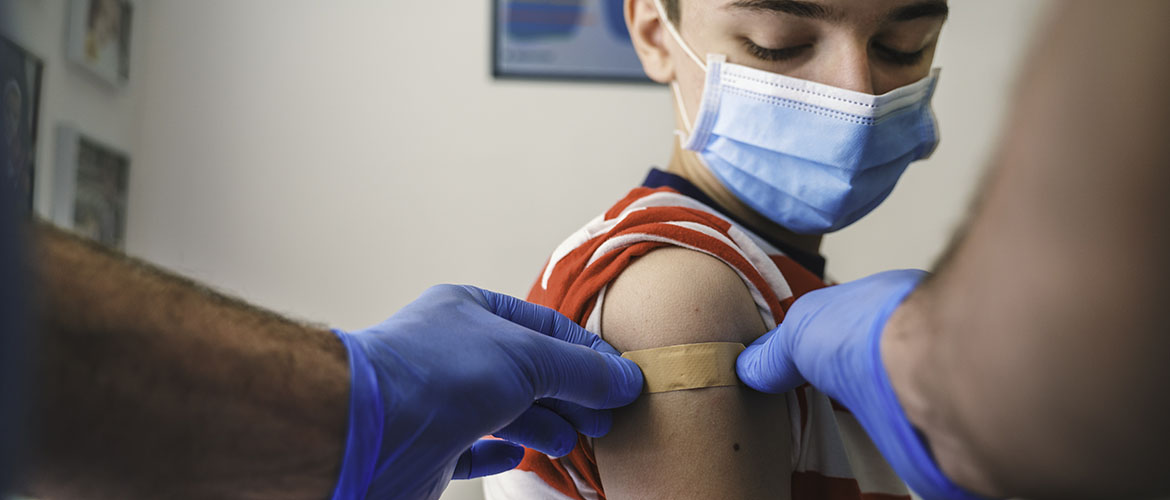Health officials warn a lag in childhood vaccinations during the COVID-19 pandemic could lead to outbreaks of other preventable diseases after school starts in the fall.
Routine vaccinations dropped dramatically early in the pandemic, and although they started picking up last summer, many children and teens still need their shots, the Centers for Disease Control and Prevention found in a recent report. Delays may result in outbreaks of illnesses, including measles, mumps and whooping cough.
“Even though we’re fighting this pandemic, we have to be mindful of these diseases we thought were eradicated,” says Dr. Leslie Weisberg, market chief medical officer of Blue Cross and Blue Shield of Texas (BCBSTX).
To improve vaccination rates, BCBSTX and the Texas Department of State Health Services are working together to more accurately determine which members are behind on immunizations for vaccine-preventable diseases, including COVID-19. The state agency, which collects immunization records for all Texans, provides BCBSTX monthly updates the insurer uses to identify and reach out to members in need of vaccinations.
"All childhood immunizations are very important. We don’t want to see a resurgence of these diseases."
The effort began last year to boost vaccination rates for BCBSTX Medicaid members, but has expanded to include all plan members. It has helped increase BCBSTX vaccination rate tracking as much as 50%.
“Having these immunization records is a really big deal for our members, communities and providers,” says Sara Daugherty, BCBSTX executive director. “It will help us better target member interventions at both the individual member level and community health level to target specific areas of the state which may need immunization and vaccine education and support.”
Before teaming with the state, BCBSTX only received updates once or twice a year, making it more difficult to target and remind members to get their shots. To try to bridge gaps, the company used claims information, which often wasn’t up-to-date or complete. For example, some vaccine providers may not submit insurance claims.
“A lot of folks don’t get vaccinations from their primary care provider,” says Patti Schauf, BCBSTX compliance and risk management director. Members sometimes go to public health departments and community clinics for immunizations.
The new collaboration allows BCBSTX to track immunizations, no matter where members got them or whether an insurance claim was filed — doctor’s offices, health departments, retail pharmacies or mobile health clinics.
“Immunization tracking has been a terrific tool for us,” Weisberg says. “This provides a more focused approach to our outreach.”
So far, BCBSTX has received records for about 3 million members. After vaccine gaps are identified, BCBSTX clinical experts and customer service representatives notify members, offer vaccine education and determine whether they need assistance finding immunization providers.
“This helps give us a full picture of care,” says Schauf of the effort.
The CDC said in its report that preventing new outbreaks of vaccine-preventable diseases “requires a consolidated and coordinated effort among multiple partners to promote catching up and staying up to date on routine vaccinations for children of all ages.”
Weisberg agrees.
“The concern for outbreaks isn’t just for primary school,” she says. “College students are at risk, too. Outbreaks of meningitis b can be devastating for the college-age population. All childhood immunizations are very important. We don’t want to see a resurgence of these diseases.”

